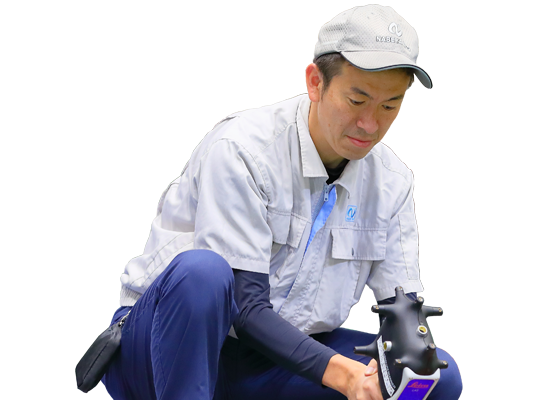FAQ

FAQ

Our equipment is available for long-term rental.
The scanner emits beams of laser light which hit the target object and are reflected back into the device’s sensors. The amount of time it takes for the light to return to the sensor is translated and recorded as XYZ positional data thousands of times per second. This data is written to a file called a point cloud.
The maximum size target area for a single scanning position is a circular area with a diameter of about 320m. However, if we move the scanners to multiple positions, we can scan targets of an arbitrary size.
The nominal ideal operating temperature is 20°C ±2°C. However, we can usually capture viable data anywhere in the range of 10°C to 40°C. Loud noise, strong wind, and vibrations can cause variance in the data. Our scan data is accuracte to ±0.03mm.
Of the more than 6,000 projects completed, a few examples include automobile production lines, aircraft jigs, welding robots, power plants, and power generation stations.
The measurement time varies depending on the measurement object and the measurement points on it. For a fee estimate, please contact us.
Shiny objects need to be sprayed with a removable white powder before scanning. Porous or fluffy objects, such as sponges, cannot be scanned do to their tendency to absorb laser light. Lasers can only collect data on the “front” of the target. When the shape of the object makes it impossible to scan all surfaces from one position, we take multiple scans and merge the scan data in post-processing. Furthermore, if an object’s temperature is extremely hot or cold, data can be skewed.
To learn how to operate the all of the scanners takes on average 2-3 months OJT. Mastering all the software takes years of engineering school and work experience.
Metrology trackers and scanners employ Class 1 and 2 lasers. They are completely safe to the operators as well as bystanders and no safety equipment is needed. Looking directly into the laser for an extended period of time may cause transient disturbance of vision.
It takes 5-15 minutes to set up and do a basic calibration for each of the devices before beginning operation. We inspect and calibrate each device monthly. Furthermore, the makers' maintenance contracts include annual inspection and calibration.
Please describe your project specifications in the form below and we will get back to you in 2-3 business days.